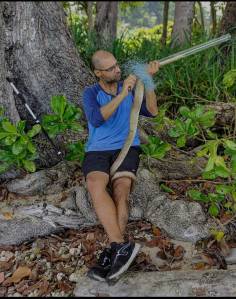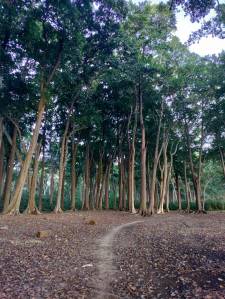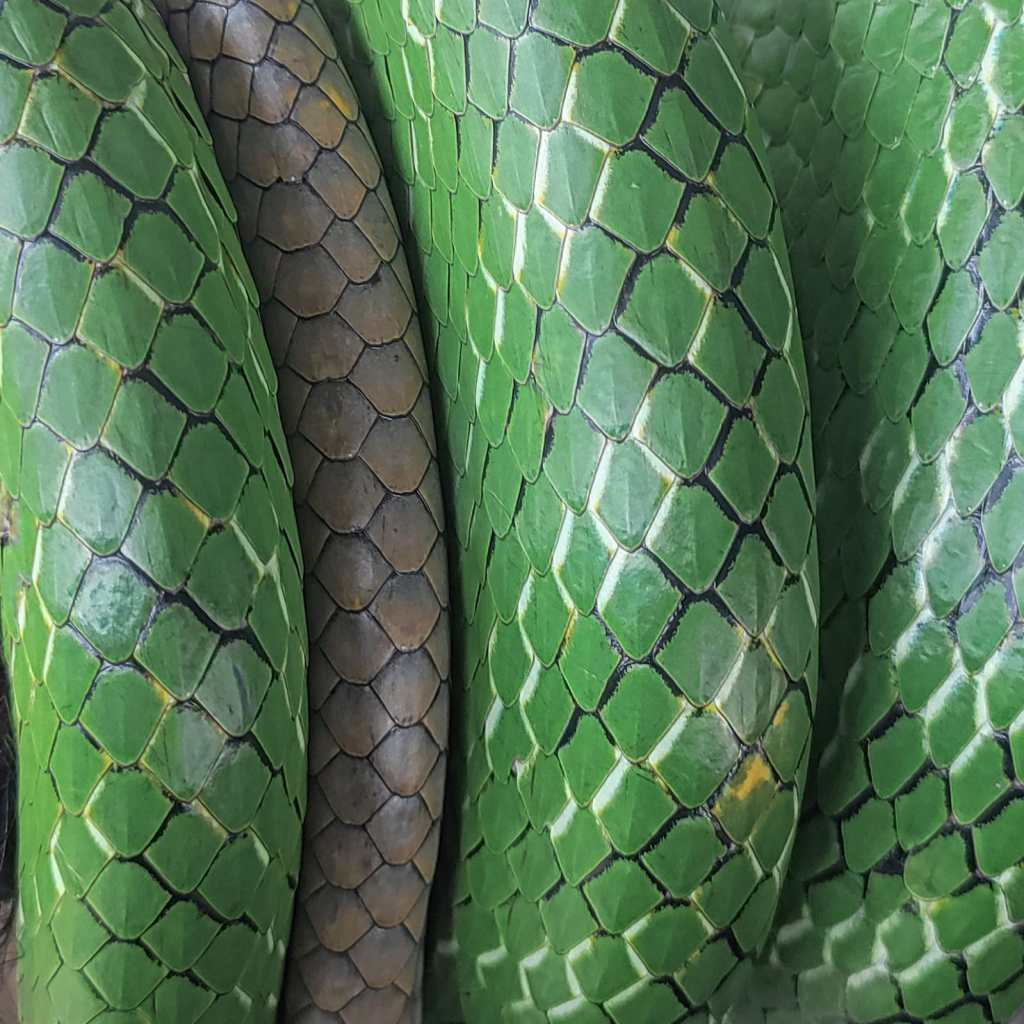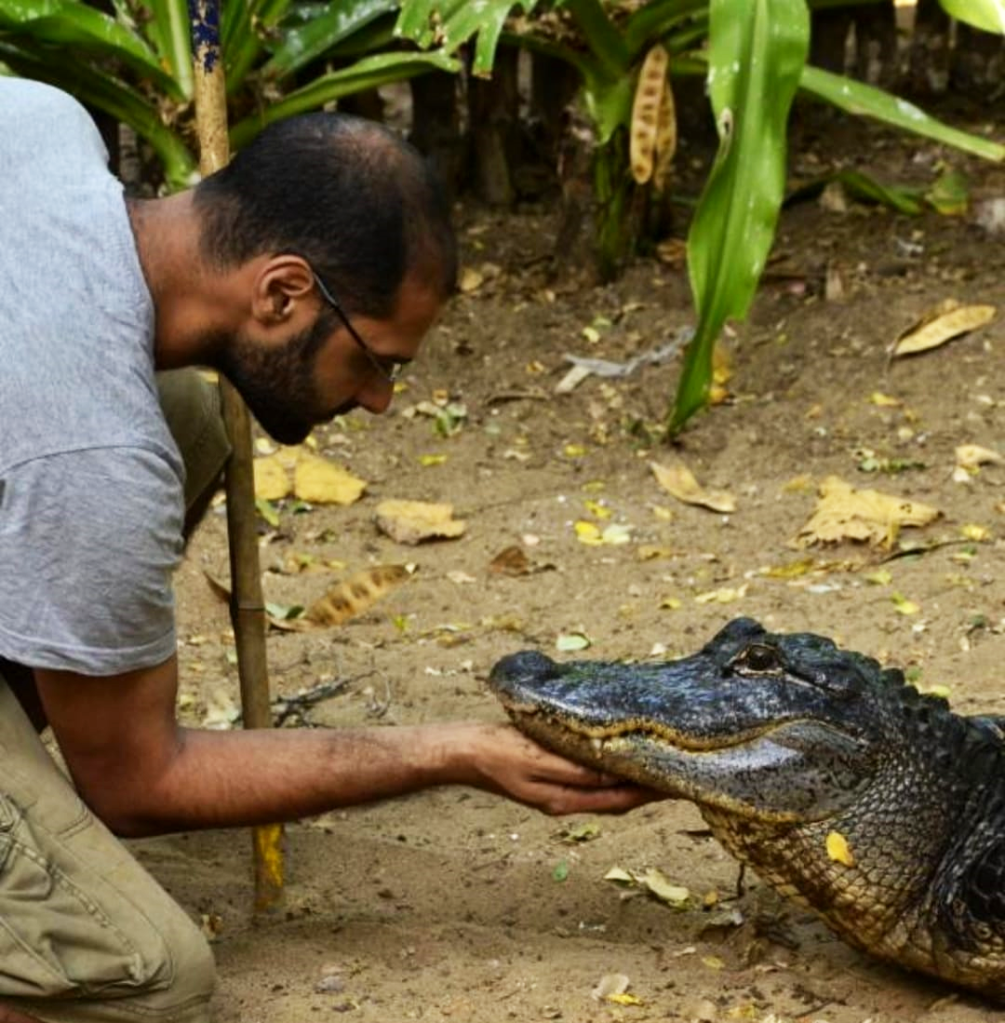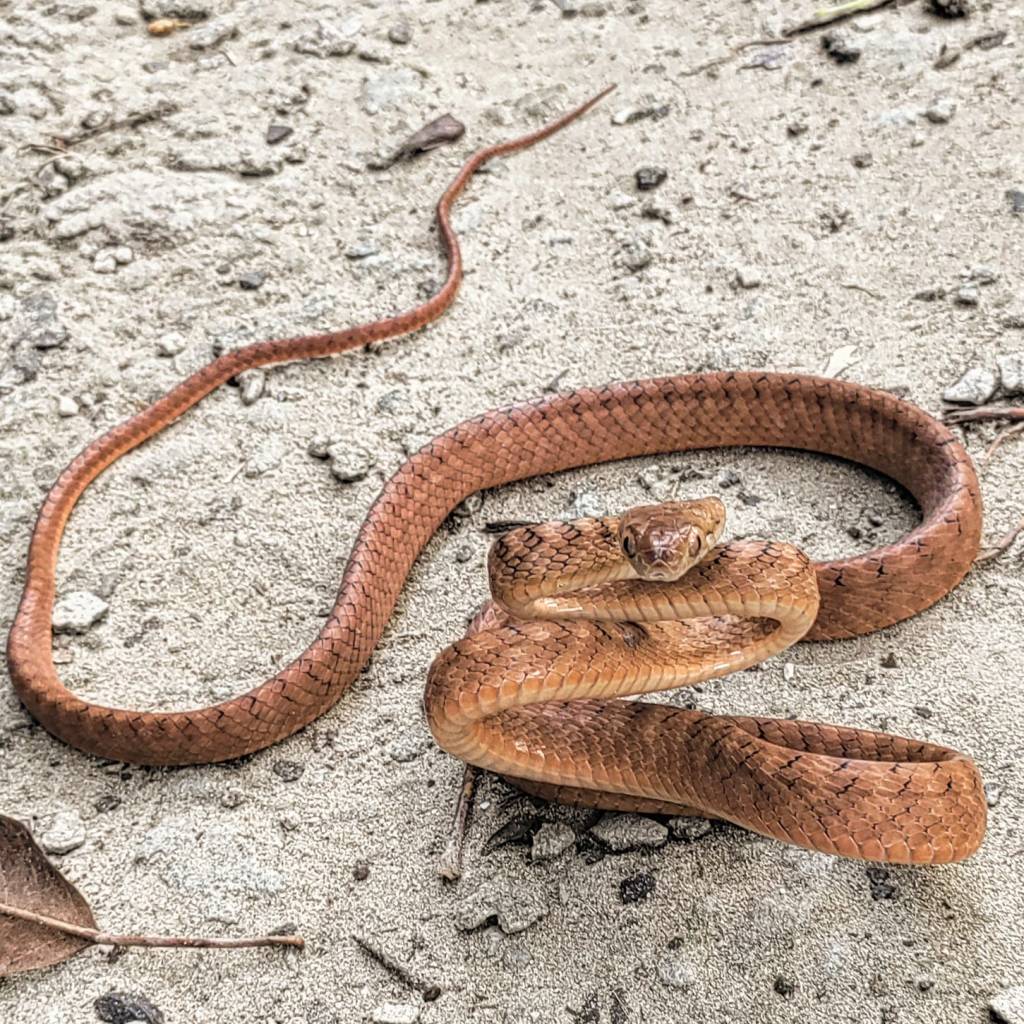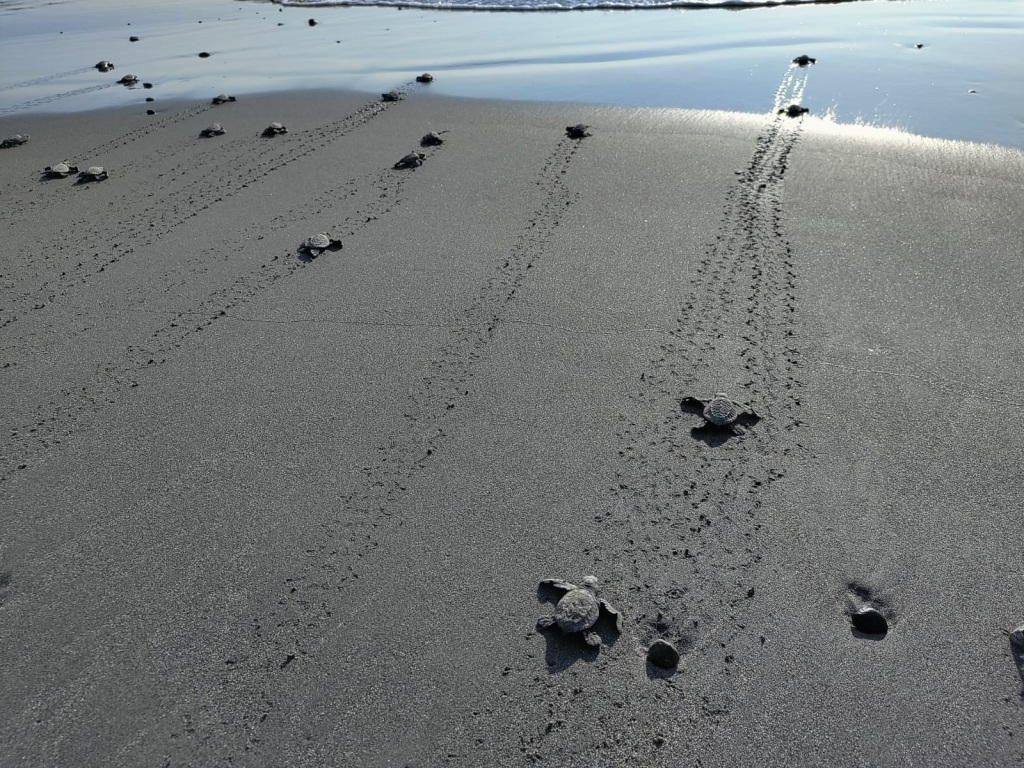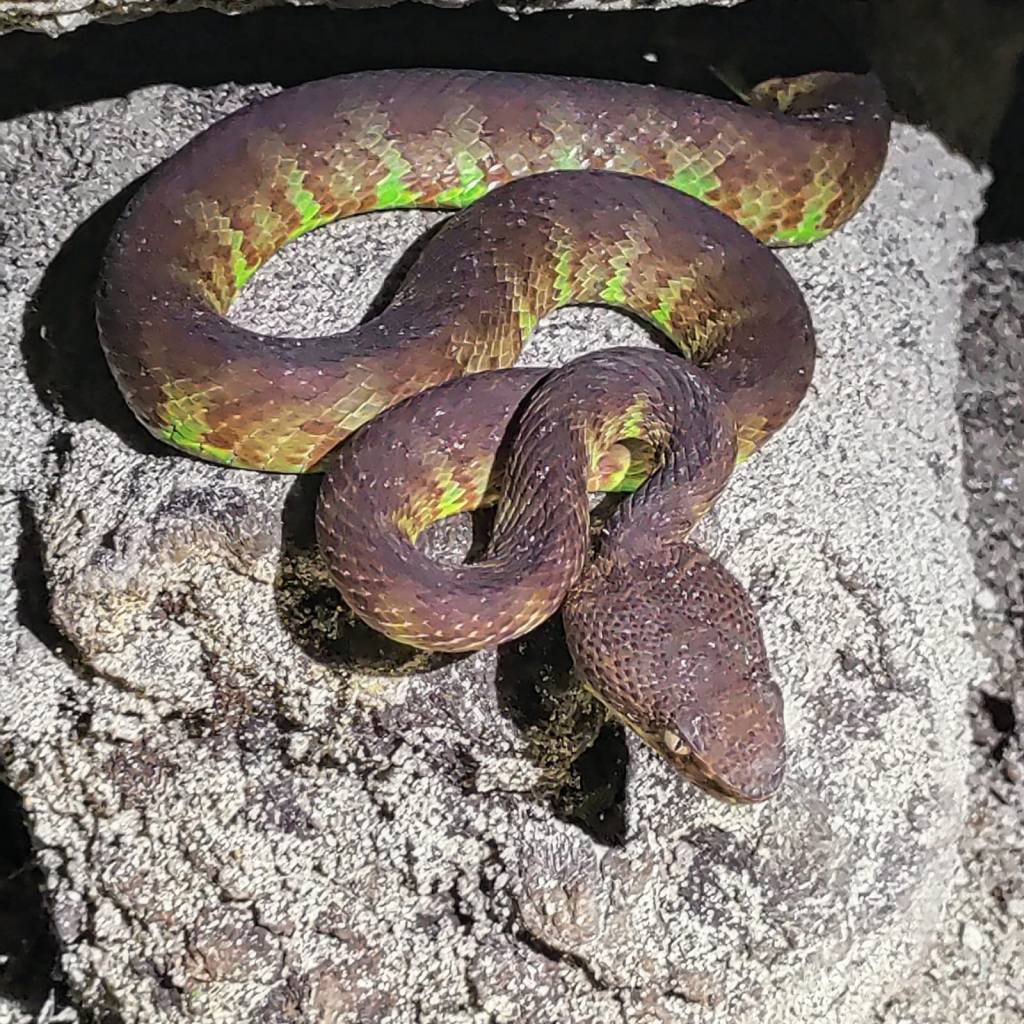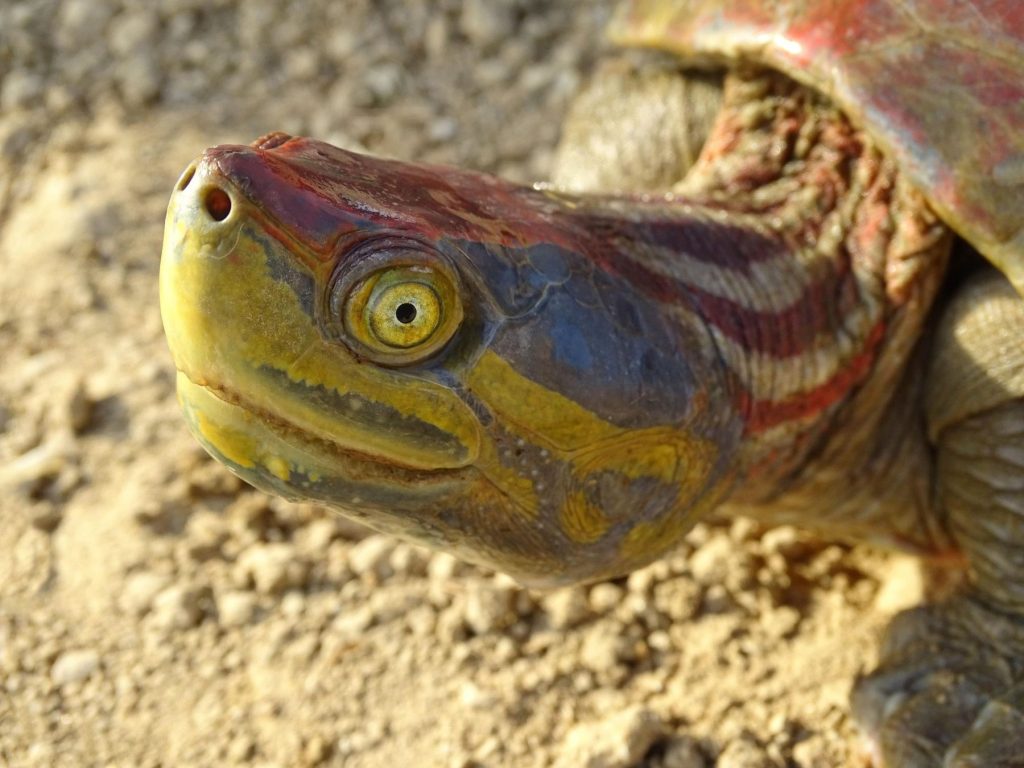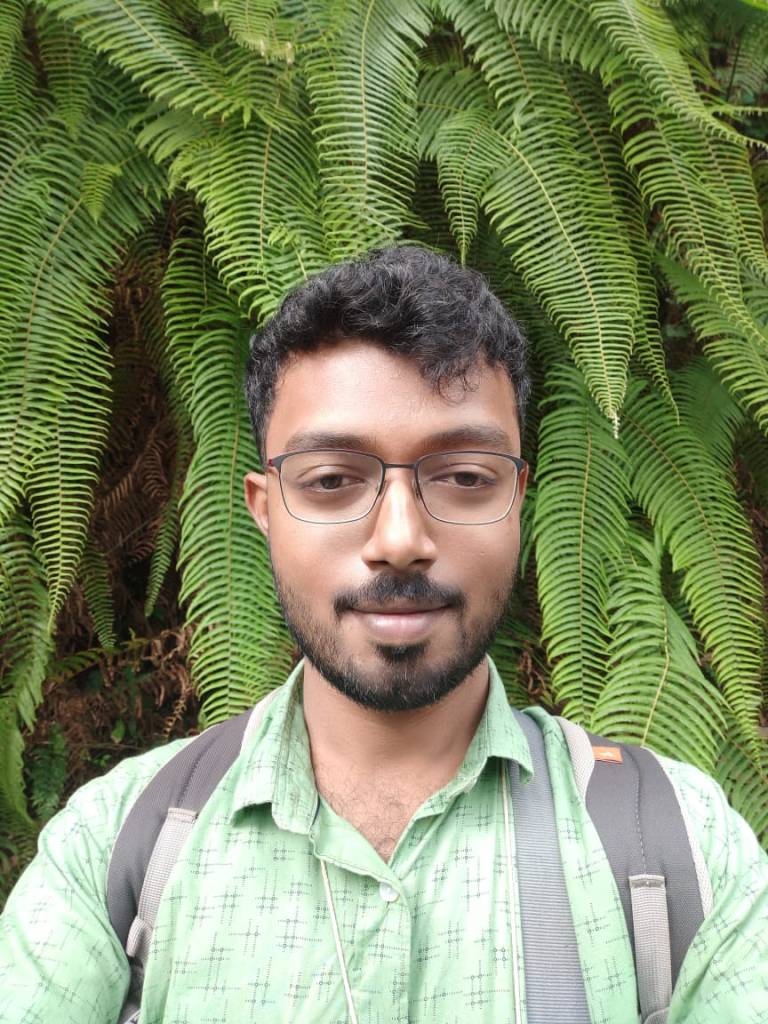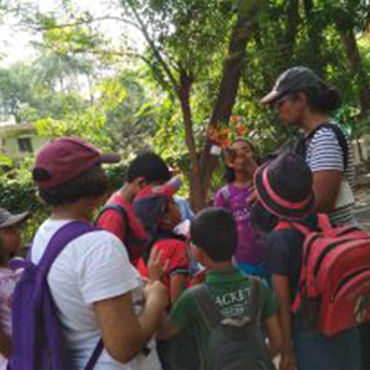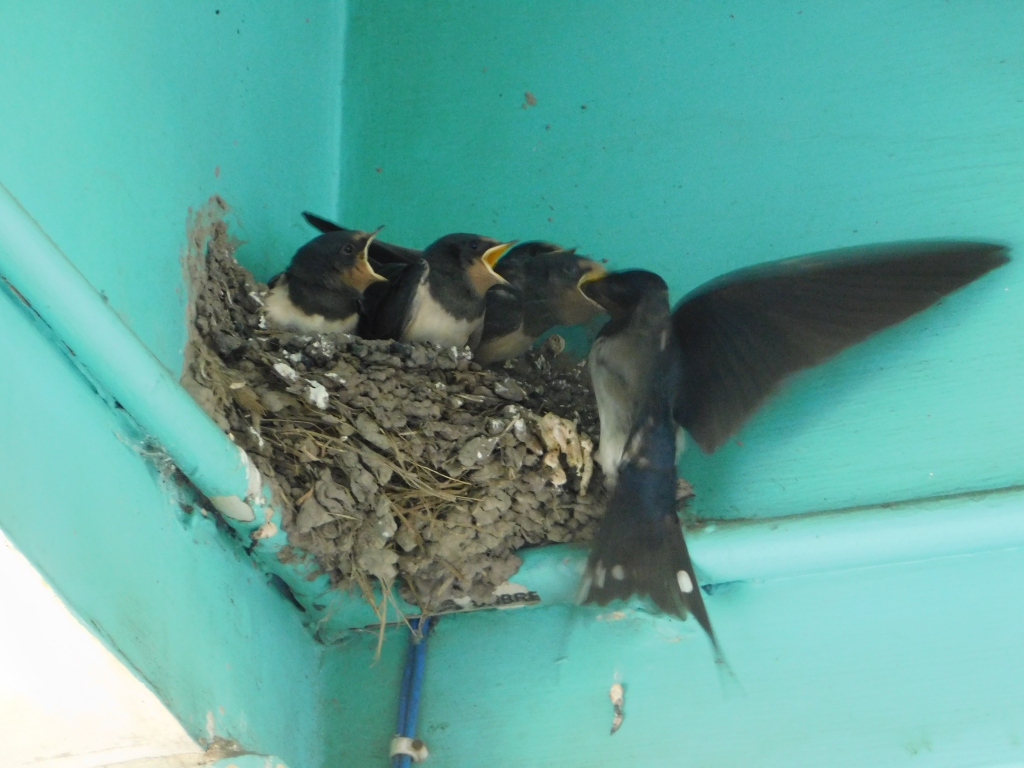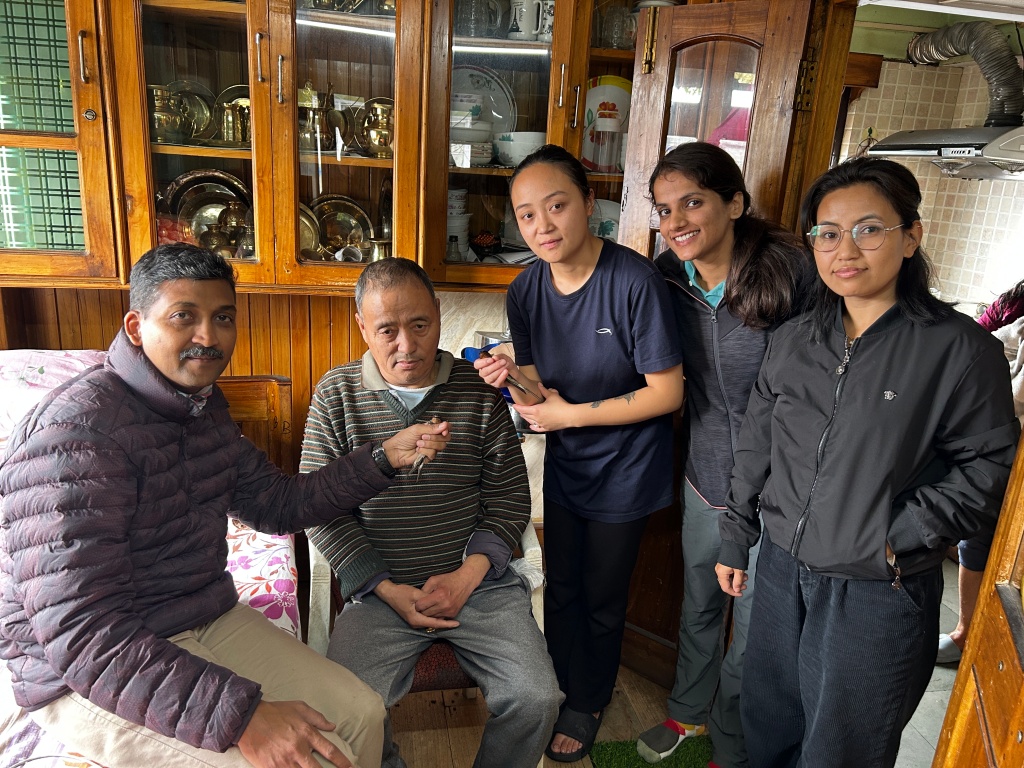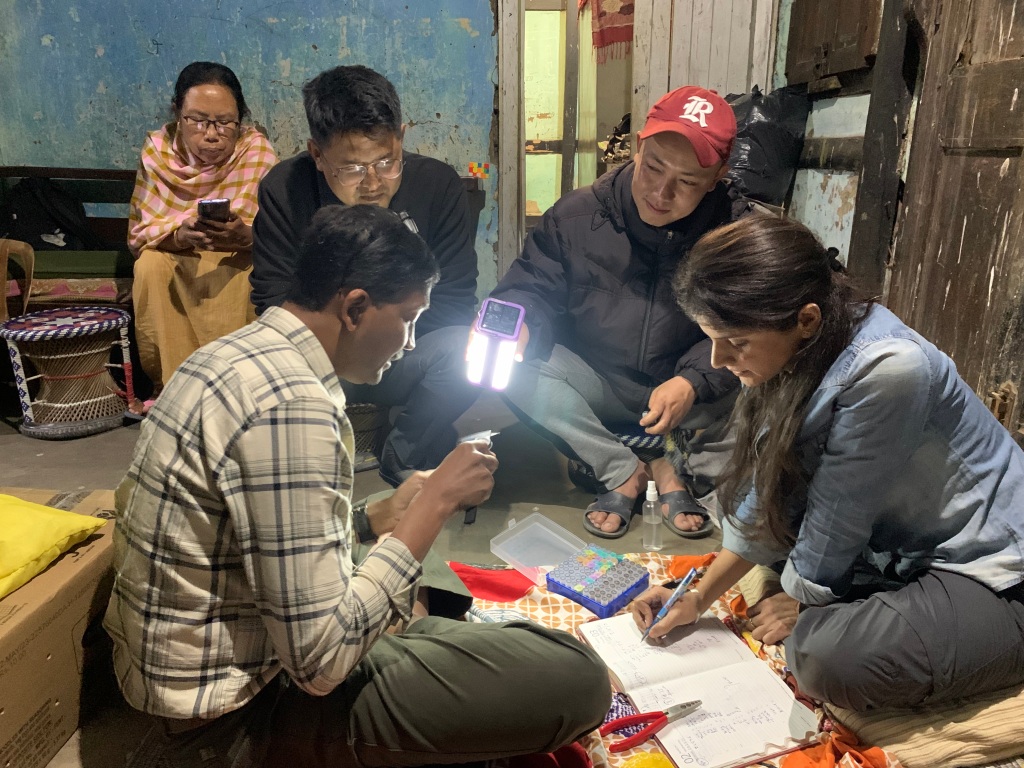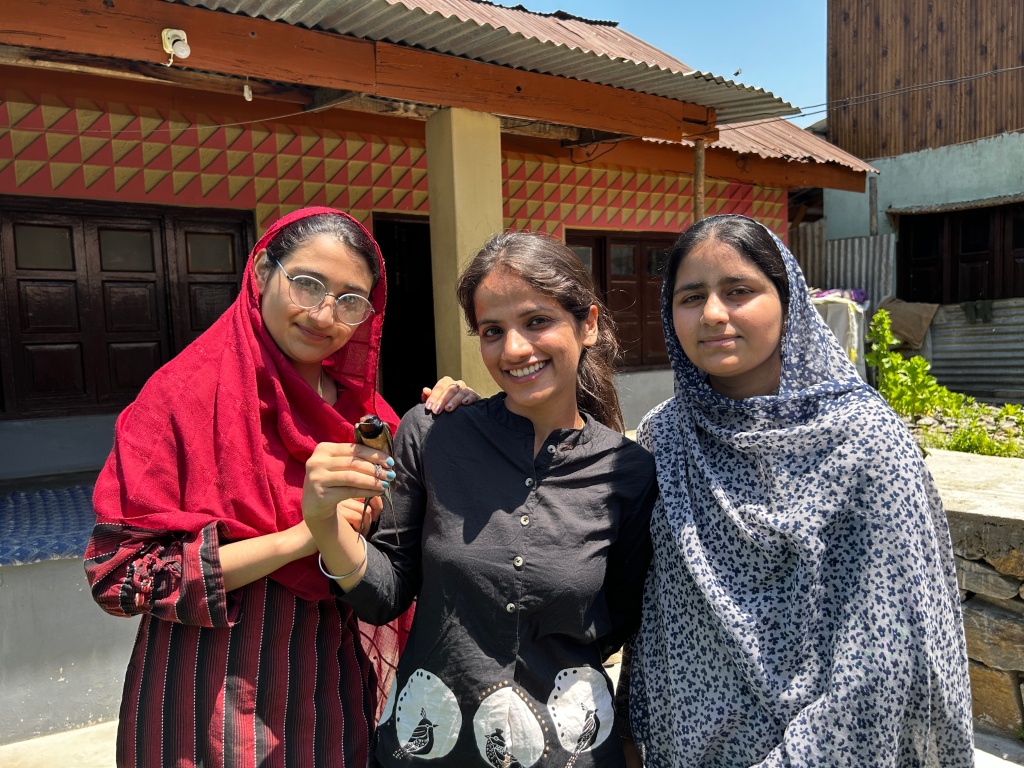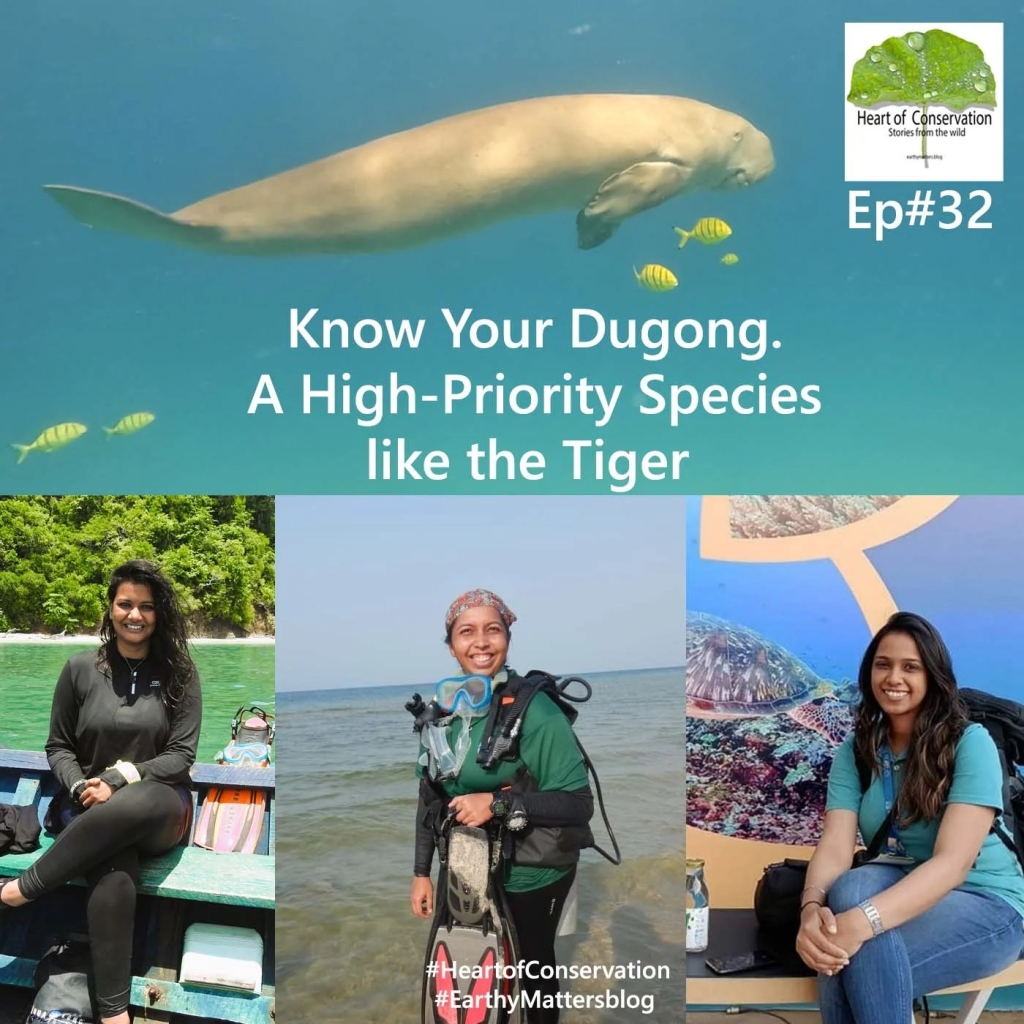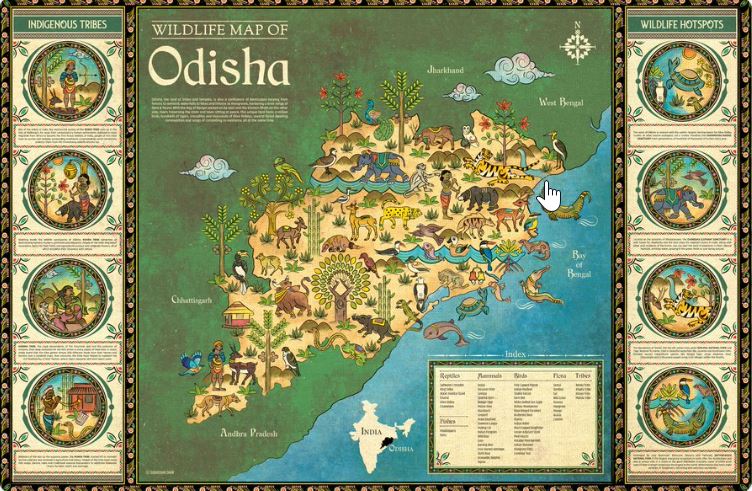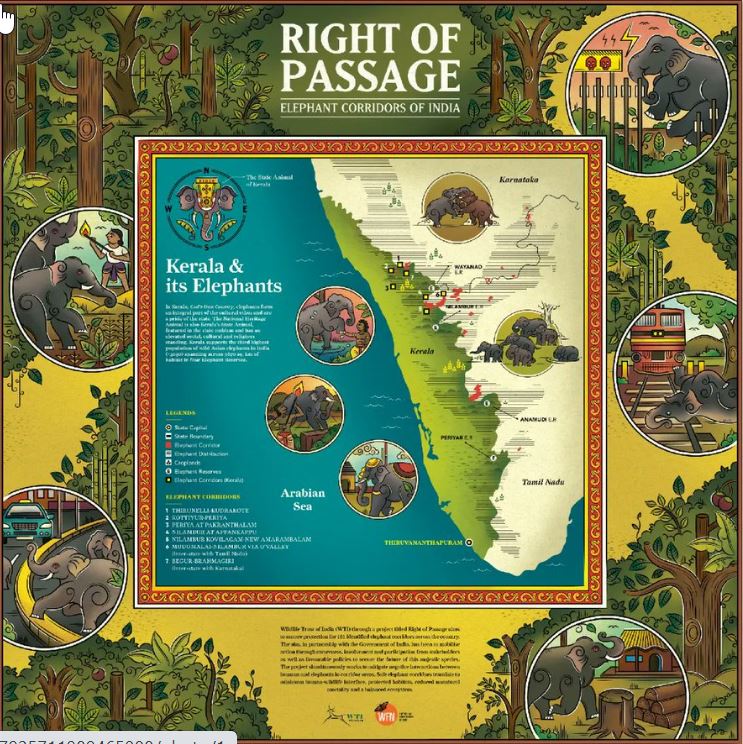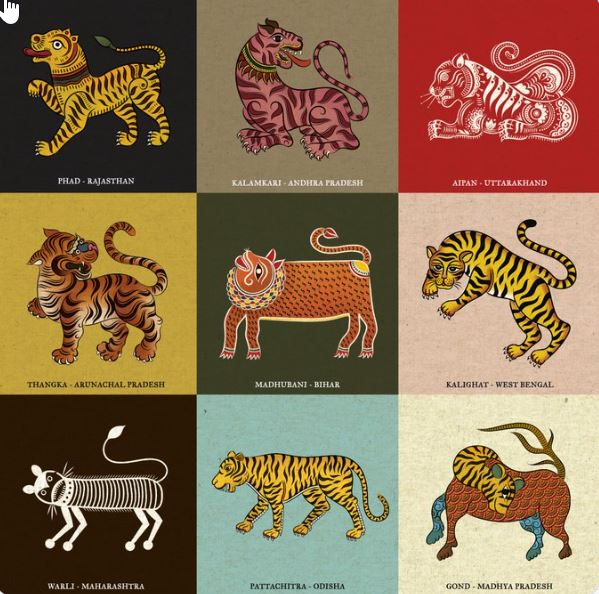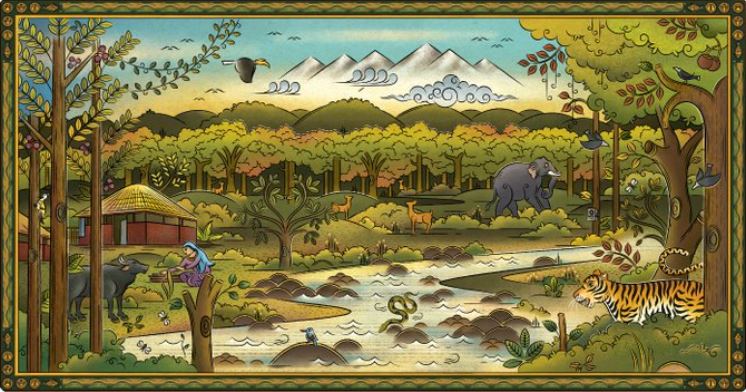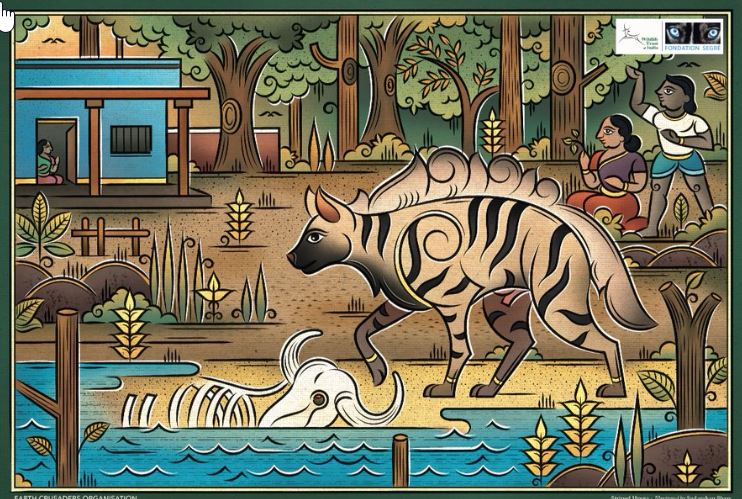Heart of Conservation Podcast Ep#36 Show notes (Edited)
0:00: Call of the Collared owlet
0:04:Host: Lalitha Krishnan
I’m Lalitha Krishnan and you’re listening to episode #36 of Heart of Conservation. Today we are going to be talking about how waste management can be a profitable business. Normally when we sort out our waste, it is off our hands and not our problem anymore. But when garbage dumps start growing into hills polluting air quality and spreading disease, we sit up and wonder why nobody is doing anything. I’m speaking to two amazing Clean Tech innovators, Rahul Nainani, founder and Gurashish Singh, Co-founder and COO at ReCircle, who converted biomining waste into a booming business. It’s not every day we hear success stories of positive change. Let me begin by welcoming Rahul and Gurashish to Heart of Conservation. Thank you both so much for joining me here on this platform today.
1:06:
Guest 1: Rahul Nainani:
Thank you for having both of us.
Guest 2: Gurashish Singh:
Yes…
1:09:
Lalitha Krishnan: My pleasure. So, Rahul, since you are Bombay-based and ReCircle’s headquarters operates out of Bombay, this question is for you. I heard that you both visited the Deonar waste dump which has existed since 1927. It’s the oldest dump in Asia. Legacy waste: waste that is old land fill, inherited waste, not necessarily even created by your generation. So, what did you see in this mammoth garbage pile that inspired both of you to become clean tech innovators? Most people would have run a mile, including me.
1:50:
Rahul Nainani: No, absolutely, Lalitha, I think, I was as ignorant as the rest of us, before we started ReCircle. And having studied finance, nowhere in my mind did I think I’d be working in the waste sector. But I like to believe that, waste and circular economy, is something that just happened to me, and I think that’s for the very right reasons itself. So, we launched in early 2016 under the brand name of RaddiConnect, which is what we rebranded as ReCircle. But just when we were launching, there was this massive fire that took place at the Deonar dump site. You know, there’s this iconic image that NASA took from space where you could see that fire burning even from space. And it went on for a few weeks in fact. And when we were early in our business and we were just launching, the idea was to find, look at, what was happening with our base and we were as ignorant as anybody else. It was more of an out-of-sight, out-of-mind mentality. Having lived in Bombay all my life, Deonar was just like, one dump site which you cross on the way to Lonavala. But one fine day when this fire happened, we planned to go down to the dump site and see what went on and why this fire happened itself to start with. So, there were a few things that we found out during this fire. The first thing was that these fires happened regularly. And it’s not just, that one fine day that this was escalated. But the only reason in the end, not just us but the entire city woke up is because the wind was blowing towards South Bombay and South Bombay being South Bombay, people started waking up and realising that this was a massive issue. But these fires happen daily. And the dump site, if you look at the map of Mumbai, is pretty much located in the heart of the city, but it has a creek on one side. So generally, when the wind blows towards the creek, you don’t realise the extent of the fire. But this fine day when it was growing towards the city and that’s when we all woke up. The second thing that drove me to take that leap of faith and see how big this problem is and think that we need to work towards a solution was that we worked with an NGO called Apnalaya that works in the Deonar dump sites, in the neighbourhoods surrounding the dump site. And they gave us a very astonishing fact that the average life expectancy of people that just live around the periphery of the dump site–these are again, not the people that work in the dump site, but only live in the slum area next to it–was 38 years of age and, and that was an eye-opening number to me and it helped me realise that if this is impacting the people just living around the downside, how soon is it going to start impacting the rest of the city as well as the rest of the country? This story is not just about Deonar dumpsite in Mumbai, but this is pretty much made with the Ghazipur dump site in Delhi. May be Bangalore, maybe even Kolkata is pretty much the same city, same story across all cities across India. And, together Gurasish and I must have visited more than 50+ dump sites in the country, and the situation is quite dire. So, that helped us realise that of course we need to make an impact in this space. And that’s how our journey began into working towards starting ReCircle.

5:12:
Lalitha Krishnan: Wow. God bless you guys, somebody had to do it. Gurashish, maybe you can answer this. So, help me draw a picture of ReCircle’s operation by completing the story. OK? So, I’m a rag picker or a saffai karamchari sorting through a pile of garbage in Deonar. What next? What happens?
5:35: Gurashish Singh: Overall, let me help you understand how waste flows #1 The lady or the man in the house removes the clean recyclable waste, right? So that’s typically your newspapers and things like that that are sent to a raddhiwalla. Then the house helper–who comes to the house has the first dig at the waste– who will remove bigger cardboard boxes or Bisleri bottles, PET bottles, and things like that. After that, the waste goes to the garbage collector of the building or the person who’s putting the garbage in the garbage truck. Post this, the waste will end up in landfills and oceans. So even though it is a pretty informal supply chain right from the start to the end. One of the most astonishing things is that fortunately, we have a very strong-backbone supply-chain where people are removing waste at so many levels. But the unfortunate scenario, and this is in 90% of the cases, the waste is not segregated. So, if we just segregate the waste, it will make it very easy for this extremely long supply chain of people that are, actually making a living out of the waste that we throw out also. So yeah, that’s actually what happens. And, there is a supply side to the supply chain that works. There are scrap dealers, kabadiwalaas, your house help, the person who is, you know, down in the building collecting the garbage right till that truck reaches your dumping grounds. The bigger problem is people not segregating this waste.

7:31: Lalitha Krishnan: Thanks for that. Talking of ‘sorting’, one generally hears of sorting garbage into glass, metal, cardboard, wet waste and plastic. In one conversation I heard you mention sorting garbage into 40 categories. I mean I was blown away. Could you share a few examples and which materials are the focus of ReCircle?
7:56: Gurashish Singh: Sure, let us again start with India, where we’re expected to segregate our garbage into three categories that are dry, wet and hazardous right? And out of the dry waste… if you typically see the four major four or five major categories that are there–paper, glass, plastics, metals, e-waste. In India we are not even supposed to segregate different types of waste. When we travel internationally, we do the paper separately, the glass separately, dry separately, and wet separately. So however, given what is actually supposed to be done in India where we segregate our waste into dry, wet and hazardous, this dry waste then reaches our facilities where we first primarily sort the material into paper, plastics, metals, glass and e-waste. Then, in turn, each of these materials is further segregated. So, say paper is segregated into four categories. That’s white, coloured, corrugated boxes, coloured-corrugated. Your glass is segregated into alcohol bottles, and other glass bottles and then colour-segregated. Plastic belongs to seven different categories, right? That’s number one to number seven. #1 being PET #7 being others. This level is then further categorised into colours, transparent and things like that. And so is e-waste. So, leading to all this, we segregate over 40 different categories of waste. We also connect and segregate multi layer plastics or the 7th category which mainly is the packaging material that is composed of multiple layers of different polymers. And we make sure that this either goes into road making or recycling or energy recovery and waste to energy plants or cement factories, which is all the government-approved way of managing this waste. So, yes, the one category of dry waste that we collect from individuals is then further segregated into 40 categories.
10:11:
Lalitha Krishnan: OK, could you give me an example of what 7-layer packaging is? What product are we talking about?

10:18:
Gurashish:Multiple layers. An easy example would be probably a packet of any chips that we like to get.
Lalitha Krishnan:
OK.
Gurashish Singh: So, if we notice, the top layer would be plastic, there will be an aluminium layer with it, right? So, there is an aluminium foil if you see it on the other side. This is basically a merging or a combination of multiple polymers and other materials that cannot be recycled. So an easy example is a water bottle which is PET. If we break that down and granulate it, we are going to get PET granules back. But when there are different layers of either different polymers or different materials, the output is never going to be a single material. That’s going to be a mixture of all materials.
11:10
Lalitha Krishnan: Thanks. Rahul, how many villages, towns and cities does ReCircle reach? And are any of these remote? For instance, do you cover vulnerable areas of India, like the mountainous areas or islands like the Andaman island where there’s really no extra land for dumping garbage? Having been there–and my last podcast guest was a herpetologist who lives in Andaman—he says Andaman island has a landfill now. I mean, there’s nowhere for the garbage to go. It doesn’t come back to the mainland so…
11:45:
Rahul Nainani: Correct. So currently, our operations span over 250+ locations across India covering major cities like Mumbai, Delhi or Bangalore, but also covering tourist locations like Shimla or Haridwar and also, certainly difficult-to-reach locations in the northeastern area which might be in Assam or Meghalaya, where we are actively working on collection of this material. Having visited Andaman island myself, a few years ago, as I’m an avid diver, I did see the need for waste management over there. But how our business model works is that we work with brands, which is a B2B business. So, we work with brands to help them to offset their footprint. So, when I say this, essentially, let’s say we are working with a beverage brand and they’re selling their brand in India. We collect an equivalent amount of beverage bottles on their behalf. Now, while, our mandate for collection of this material comes from the businesses that we work with, we are covering almost 90% plus of the States and Union territories in India. But in certain areas where we need some additional support from brands where we can do the operations like in Andaman, right now, where we are not working. But we know companies that are working over there. We are trying to maximise our footprint as well in terms of collecting from even the harder-to-collect locations. But here my call to the listeners would be that if you are a brand and are looking at consciously making this effort, please do reach out to us. And we would want to work in harder to access locations further as well …to collect material from where it is difficult to collect these resources. But yes, currently we do have a mix of Tier 1, and Tier 2 rural areas as well, where we are actively collecting this material from.
13:38:
Lalitha Krishnan: Good to know. 250 plus locations is quite something. Considering ReCircle’s reach, you’re providing livelihood to a large number of people. How would you say it impacts their lives?
13:55
Rahul Nainani: Yes. So, just to take one step back, the waste management sector in India, as Gurashish mentioned, is extremely informal and fragmented and it has a lot of moving parts involved. Now our purpose or our vision at ReCircle is to bring along ethical circularity. And, the idea is that while waste is an environmental problem, it’s also a massive people problem because there are nearly 4 million waste pickers or people who make an income out of scavenging waste from landfills and dump sites across India. So, our business model was, in a way where we wanted to empower these people and formalise them as compared to displace them. Because, we very well understand, that without having these people clean up the trash after us, there would be no waste management that would happen in our country at all. So, we work with local scrap dealers, aggregators, and waste collectors that work across the country at these 250-plus locations. We formalise them with the help of where we’re working with them on, health checkup camps… connecting them with government schemes and also eventually working with them on additional sources of income. So, in simplicity, we charge the polluter, which is the brand owner that we work with and we incentivise the collectors that collect this material on our behalf. And with that intent, we’ve directly and indirectly impacted more than 3000+ informal workers. While this is not a big number in the larger context of things, this is where we are currently. At a small stage where and we can do this work. And where either with the help of, you know, social security or with health camp with additional sources of livelihood is where we’ve been able to impact these 3000 plus informal workers that are part of our supply chain. And our vision is to work and increase this number as we scale up our progress in terms of waste recovery. We also want to impact more and more waste pickers in the organisation. We don’t like to call them waste pickers, but we call them ‘saffai saathis’ as there are friends who help us clean up the environment as compared to picking our waste because what is waste for us is a resource for them and they can make a living out of this. So, that’s how our mindset is to personally not call them waste pickers because they’re cleaning after us. We are the waste generators and they are the cleaners. They’re cleaning after us. So, it’s very ironical to call them waste pickers or waste workers in that sense. So, rebranding them as essentially saffai saathis, rebranding waste as a resource to start with, because what’s waste to us is a resource to them and also for our ecosystem. And that’s how we intend to build this inclusive business model where we empower these informal waste collectors as a part of our supply chain as compared to displacing them from the ecosystem.
16:55
Lalitha Krishnan: Nice. I like that whole positive outlook you have towards your business and to everyone who’s involved. Well, could one of you give us three foul facts about garbage that are India-specific that my listeners may not know?
17:09:
Gurashish: One of the most startling facts that we came across was… did you know that India imports 465 crore plastic bottles annually? We stumbled upon this a decade ago and we found it absolutely unacceptable. If there’s one thing that we don’t have a shortage of in India, that’s waste.
Lalitha Krishnan: Why?
17:41
Gurashish Singh: The reason for this is two ways. One is that again, going back to one of the first questions you asked me, people do not segregate waste. So a lot of it just ends up in landfills and oceans, right? If we just start segregating our waste, multiple people will remove this and send it to a recycling unit close to wherever they are. So that is one of the one of the astonishing or foul facts as you call it. Secondly, India alone produces a massive amount of 3.4 million tonnes of waste. Again, only 30% of this gets recycled, mainly due to non-segregation of waste. We are the third largest waste generator in the world and if we continue at the same pace, we will be the largest by 2048. That’s the estimate and another one would be a 4 million people make an income out of scavenging waste from landfills and oceans and streets. They are unorganised and unrecognised, and we feel that somewhere they are the only reason for the entire waste recycling and waste infrastructure that is being managed in India as well. So again, it will be a call out to all the listeners here that whoever your waste picker, waste collectors or saffai sathis are, they’re invisible warriors, in this entire shadow supply chain. So, the dignity of work is something that they really deserve.
Lalitha Krishnan: Thanks for that. It’s so true. So could you share 3 positive facts about garbage that emerges from your business?
19:36
Rahul Nainani: I think I’ve been looking at the larger landscape of sustainability and clean tech itself, I feel that I’m extremely optimistic in terms of solutions coming out of this space, especially because there’s been more traction that’s been in this space in the last, let’s say, three years as compared to the last three decades put together. So, there’s a lot of movement in the right direction that’s happening. While, in India, we are seeing small movements that are coming along but I think at the larger levels also, there are somethings that are coming along. Let’s, take the example of Indore, which is a very talked-about town in terms of the cleanest, town in India itself year after year. And I think there’s a lot of learning that we can take from there where having visited Indore myself and seeing the case study over there, I think they have reached almost 90% plus segregation of waste at source. And, like how Gurashish has been mentioning, I think the biggest problem is that we are not sorting our waste. And if you’re not segregating, then it becomes waste and it doesn’t become a resource. So, there is a silver lining. Having seen a city like Indore do it I think there’s a lot that we can learn from them and move towards a more sustainable future. The second thing probably is that there’s a lot of policy shift that’s coming along. With global pressure on plastic pollution, sustainable development goals have come across at the global level. Even in India, the plastic waste management rules were for the first time introduced in 2016—they never existed before–which is part of the solid waste management rules earlier. So that’s bringing around a lot more traction in this space. And then of course, our Prime Minister’s global Swachh Bharat movement, which if nothing, has at least brought in awareness to a very large level of population which is that we need to work towards a cleaner India. So, I think there’s a lot of policy pressure, also external pressure that’s coming along, which is moving towards the right direction in that sense. And then finally, I feel that when we started ReCircle in 2016 and as we sit today in 2024, we have seen this industry evolve so much that earlier clean tech as a sector did not even exist. You know, the sustainability term in large organisations did not even exist. And now we’re seeing that it’s becoming a part of board-level conversations. Also, so many innovators and startups that have come up in this space that are working towards solutions, not just for garbage, but for carbon, water, and energy working towards a more sustainable ecosystem altogether. So there’s a lot of movement and innovation that’s happening in this space and that keeps me extremely optimistic about the future while this has been a large problem in the past, there are people and there are solutions out there. It’s a matter of all of us taking those small steps and picking the right solutions.
I feel that when we started ReCircle in 2016 and as we sit today in 2024, we have seen this industry evolve so much that earlier clean tech as a sector did not even exist. The ‘sustainability’ term in large organisations did not even exist. And now we’re seeing that it’s becoming a part of board-level conversations. Also, so many innovators and startups that have come up in this space are working towards solutions, not just for garbage, but for carbon, water, and energy working towards a more sustainable ecosystem altogether. So there’s a lot of movement and innovation that’s happening in this space and that keeps me extremely optimistic about the future while this has been a large problem in the past.-Rahul Nainani
22:47
Lalitha Krishnan: Right. Thanks for that. All right, so who are your prime customers? Are they brands that we recognise? Are there labels on recycled, repurposed products that we can look for?
23:01:
Gurashish Singh: Right, Some of the brands that we are associated with and work with are prominent organisations such as Hindustan Unilever, United Nations Development Programme, Hindustan Coca-Cola Beverages, Mondelez. We are one of the sole partners for Tata Starbucks, helping them assist in their sustainability objectives and needs. We also work with brands across all sizes. A lot of brands in the D2C (Direct to Consumer) space as well, such as Phases, a skincare Indian brand, Honey Twigs, which is into honey and one-time use packaging. So yeah, quite a few prominent big and small brands and, and it’s, it’s been a good journey working with them.
Some of the brands that we are associated with and work with are prominent organisations such as Hindustan Unilever, United Nations Development Programme, Hindustan Coca-Cola Beverages, Mondelez. We are one of the sole partners for Tata Starbucks, helping them assist in their sustainability objectives and needs. We also work with brands across all sizes. A lot of brands in the D2C (Direct to Consumer) space as well, such as Phases, a skincare Indian brand, Honey Twigs, which is into honey and one-time use packaging. -Gurashish Singh
23:54
Lalitha Krishnan: Nice. So, everything you do is really impressive. And it’s on an incredible scale as far as I can see, but it’s almost–I mean since I’m speaking to you now, I now know–but mostly invisible to the public eye or backstage almost to speak. So, what does ReCircle do to nip the garbage problem at the consumer level?
24:21:
Rahul Nainani: I think I get an idea, in terms of what are we doing in terms of consumer awareness and the consumer side work? So, to build a business in this space, we realise that we have to make a large impact, we need to get big brands to start taking action. Of course, consumers need to do their bit. But there’s a while we, our main focus has been on B2B and working with big brands to make that change happen, there’s a lot of work that we do on the consumer level as well. Maybe through a collection drive in the city of Mumbai. And if you want to discard your recyclable ways, we’ve also recently started getting into a textile-based collection as well– your old clothes as well as your dry waste. We have a monthly pickup that we provide to consumers where you can sign up free of cost. And we do a door-to-door pickup once a month. And, the schedule of this is something that is already finalised for the entire year. So, if you simply follow us on Instagram, our handle is recircle.in you’ll be able to see & sign up for our next collection drives.
25:28
Rahul Nainani: We do a lot of work in the form of ‘Waste to Art’ workshops to spread awareness of how waste is not waste. We conduct workshops either in corporate offices or, even otherwise in spaces where you can sign up to see what you can make best out of waste. So, there’s a lot of awareness that happens there. We’ve worked in the past with the Start Art Festival in terms of setting up installations for waste. So, the Evelyn House installation, maybe Lalitha, you remember seeing it last year. The entire building had plastic bags sprouting out of it. We were happy to associate with the artist who helped design that in terms of spreading awareness. So that’s another thing where we use art as a way in terms of spreading awareness.

https://www.instagram.com/p/CnUUxqZILit/?img_index=1
26:21
We do have regular clean-up drives in terms of beach cleanups and other stuff that we end up doing as well.
And, finally, we also conduct Zero-waste events. So, events are a massive area where there’s a lot of footfall of people and consumer awareness can be spread. So we work with event organisers to help organise a #zerowaste to landfill event. So may it be a music festival with the likes of let’s say #SoundRise or a #TappedFest or maybe a marathon. So, we’re doing work with the #PowaiMarathon in Mumbai as well. And, the biggest one that we’ve done until now is the #ICCWorldCup matches that happened at the Narendra Modi Stadium in Gujarat, there were more than 1,00,000 people attending each match. We managed to make sure that the entire event was zero-waste over there. More than 1000 tonnes of waste that were generated at all the matches were eventually sent for processing as compared to reaching landfills and oceans.

https://www.instagram.com/p/C4x0jXaNtZk/?img_index=1
Lalitha Krishnan: That’s very impressive.
27:27:
Rahul Nainani: So, we believe that consumers need to play a very crucial role and consumers like us and citizens like us, where we try and do a small bit of awareness through the different activities. If you also follow us on Instagram, there’s a lot of awareness material that we put out over there as well. But through these events, through these collection drives, we can touch base with different consumers at different levels as well and thereby, spread the awareness. At the end of it, the idea is that consumers generate the waste, and they also purchase the waste in a way. So, how do we get consumers to become conscious consumers at the end of it? By actually picking brands that are taking action as compared to the ones that are not. So, it is a small, small part of the puzzle that we play. But the idea is that consumers can spread this awareness across different other consumers as well.
Lalitha Krishnan: Right, complete awareness and change in lifestyle. I think you’re doing a great job.
Rahul Nainani: One step at a time. You know, I think the only thing is that it might get overwhelming that you have to do a lot, but take those small steps.
28:40
Lalitha Krishnan:
Tell me about ReCircle’s initiatives: ClimaOne, Plastic EPR service, and Plastic Neutral Programmes. I don’t have a clear understanding of these things and whether they’ve been included in your earlier replies.
28:58:
Rahul Nainani: So maybe a few of them are something that we did speak about like we do zero waste events. Wherein, if you’re an event organiser, we help you manage the event and ensure that the waste that is generated is firstly reduced, pre-planned, and make sure that the processes are set up. And then, of course, look at managing the waste after the event is closed. We do collection drives for consumers, which is where consumers can participate by disposing of their recyclable waste as well as textile waste now.
But on the B2B side, we have a few services. We we have a service where we essentially help brands to offset their plastic footprint. So, in simplicity, let’s say you’re a brand that is selling 10,000 beverage bottles in the market, we collect, sort, segregate and recycle these 10,000 bottles on your behalf and ensure that it’s getting recycled and give them credits for this. So similar to how carbon credits work, we work on plastic credits and within the plastic credit space, we have two of our services. One is our EPR service, which is more compliance based. So as a part of the plastic waste management rules, if you are a big brand, you need to collect back as much plastic as you put in the market. So we help brands offset as well as meet their regulatory compliance requirement. And then we have a similar service for medium and small-sized brands, which currently do not require to do this as a compliance, but are doing this as a voluntary activity where we not only help you offset your footprint under our Plastic Neutral Programme but also help you communicate the impact of this with their consumers. So, your consumers know what are the actions that that the brand is taking. At the backbone of this is our clean tech platform called Clima One, where Clima One brings transparency and traceability to this unorganised sector. Where consumers and brands can track what’s happening is that there’s no greenwashing happening, when the material is being collected. So we are digitising and formalising the supply chain with the help of our tech platform enables us to provide these services to the brand owners that we work with.
31:00
Lalitha Krishnan: OK. I’m down to the last question. What thoughts would you like to leave with our listeners? Or could you share a word or a concept that adds to you know, our understanding of what you do?
31:17:
Gurashish Singh: For me, it would be segregation of waste. I think that’s where it all starts. That’s where the journey begins. So, to the listeners, it would be like wherever you are, whatever you do, start by segregating your waste. It’s not that difficult. You put segregated dry, wet and you do it the minute you’re throwing your waste. It should be a conscious decision to throw it in the right bin. And that’s what enables, you know, a beautiful future for the waste going forward.
Lalitha Krishnan:Thanks for that. I like the fact that you’re emphasising this throughout our conversation and it’s just simply segregate. All right. I hope our listeners remember that. How about you, Rahul?
32:05
Rahul Nainani: I think, we like to rethink things at ReCircle and one of the primary things of rethinking is that when you look at something as waste, you tend to throw this in a dustbin and you realise that it has no value. But I think what people need to start rethinking is that it is, if you rethink waste as a resource, then you start looking at it from a very different perspective. And, that’s what I want the listeners to take back after this conversation. That, rethink this as a resource or resource that can impact the lives of the millions of people who are working in this sector. It can also be a resource to reduce our reliability on fossil fuels and on our ever-depleting resources that we have. So if we use our waste as a resource, we can minimise the requirement of new resources and thereby move towards a more circular and sustainable future.

33:05
Lalitha Krishnan: True. Thank you so much. That’s being creative with your waste. Think of how you can reuse it like we all did in the 70s but I guess we didn’t have that much plastic to deal with back then.
33:18
Rahul Nainani: I think being Indians, we’re ingrained with this mindset of reuse, reduce. And if you just look back in terms of what your grandmothers and grandfathers used to do, I think that I think there’s a lot that we can learn even by just going back to the basics in terms of waste management or circular economy.
Lalitha Krishnan: Thank you so much, this has been great.
Rahul Nainani: Thank you so much.
Gurashish Singh: OK, bye.
Birdsong by hillside resident, the collared owlet.
Photos Credit/Courtesy: ReCircle Podcast cover/label design by Lalitha Krishnan
Disclaimer: Views, thoughts, and opinions
expressed in the podcast and show notes belong solely to the
guest/guests featured in the episode, and not necessarily to the host of
this podcast/blog or the guest’s employer, organization, committee or
other group or individual.



